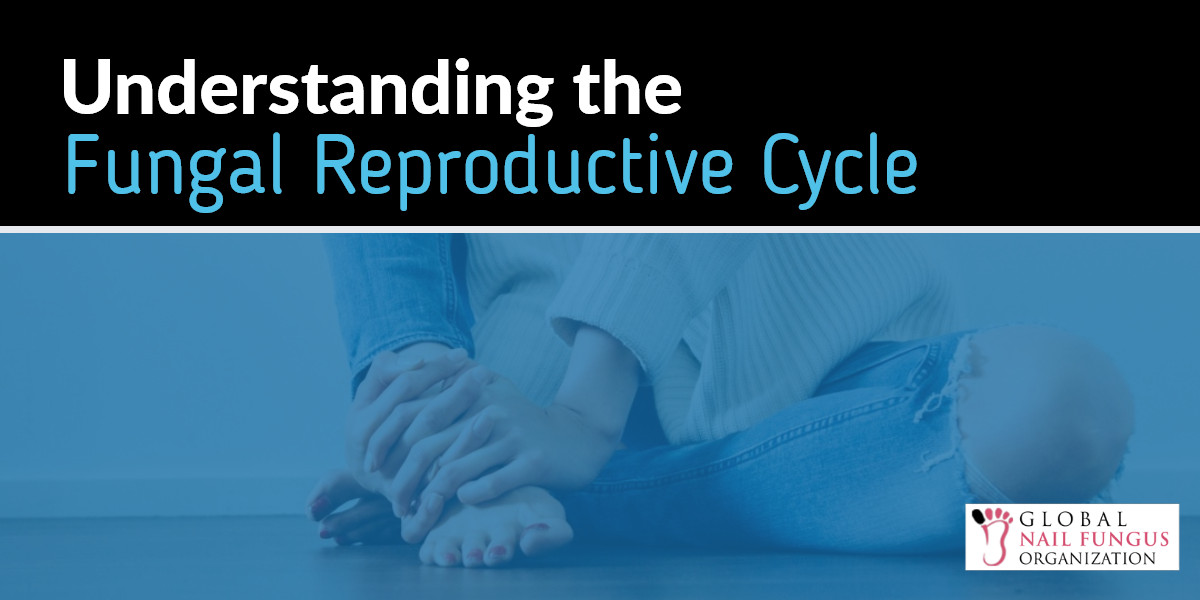Table of Contents
Understanding the Fungal Reproductive Cycle
Fungal life cycle
Fungi are eukaryotic living organisms. That is, they are life forms whose cells contain a nucleus. Fungal cells are defined by a cell wall. However, unlike plants, a fungal cell wall is made of chitin.
Most fungi are harmless to humans, but certain species of fungi are pathogenic in nature and can lead to a host of diseases, particularly on the skin. Fungi known as dermatophytes are the leading culprit behind fungal skin infections. Note, however, that even normally harmless species of fungi can lead to skin disease if a bloom (sudden outbreak) is not under control. Fungi are capable of either sexual or asexual reproduction depending on the species.
The life cycle of a fungus is divided into two parts, called anamorphic and teleomorphic stages. During the anamorphic stage, the fungus is able to reproduce asexually. The teleomorphic stage is known as the fruiting stage. It is defined by the organism’s ability to reproduce sexually. When referring to a fungus including both of these stages, the organism is called a holomorph.
This complex cycle makes naming difficult, as fungi are typically classified based on their method of reproduction. As a result, fungi may have two scientific names, with teleomorphic and anamorphic stages falling under two different genera.
Asexual Reproduction
Asexual reproduction in fungi occurs via mitotic sporogenesis. The process typically takes place on specialized stalks called conidiophores, which bear non-motile spores known as conidia. The dermatophytic genera, namely Epidermophyton, Microsporum, and Trichophyton reproduce asexually. They follow the standard process of mitosis outlined below.
-
Prophase: During this phase of mitosis, chromatin in the fungal cells form rod-shaped structures called chromosomes.
-
Metaphase: The chromosomes within the fungal cell attach to spindle fibers in preparation for cell division.
-
Anaphase: The chromosomes move along the lengths of the spindle fibers to opposite ends of the cell.
-
Telophase: Chromosomes on opposite ends of the cell begin to form a nucleus around them.
-
Cytokinesis: This is a separate process from mitosis altogether. It takes place simultaneously and causes the cell to divide into two.
When the process is complete, the new spores detach from the conidiophore and await favorable conditions to grow into a new organism.
Sexual Reproduction
Fungi that reproduce sexually spread relatively slower than those that reproduce asexually. These fungi reproduce by fusing their hyphae, or branching filaments that make up the vegetative layer of the organism. This results in a hypha containing two nuclei; one from each parent hypha. The process then continues differently depending on the species of the fungus. Species in the phylum ascomycota continue by forming a sac-like structure or “ascus” around the nuclei, where the nuclei fuse together. This is followed by cell division and production of spores within the ascus. Each ascus typically contains four pairs of spores.
Dermatophytes in their teleomorphic stage fall under genus Arthroderma (Not to be confused with the family of fungi Arthrodermataceae).
In both cell cycles, a period called “interphase” occurs. The fungal cell spends most of its time in this stage. During the interphase, a cell prepares itself for division, often acquiring water and nutrition, and producing organelles and proteins. Most antifungal medications take effect during this stage of the fungal cell’s life.
How Do Fungi Cause Nail Fungal Infection?
Dermatophytes survive by feeding on nutrient content in keratinized tissue such as that found in hair and nails. As the fungal colony grows, as does the rate at which it consumes nutrients from keratinized tissue. Infection occurs when the body begins reacting to the metabolic byproducts the colony creates. The human body is normally able to defend against this parasitic behavior. However, a large enough colony is able to survive the body’s countermeasures against infection. This means that the faster a fungal colony is able to reproduce, the worse the condition of the nail becomes. Non-dermatophytic fungi that cause infections do not specifically target keratinized tissue, but are capable of surviving off of nutrients found in the skin as well.
The speed which fungi reproduce is greatly affected by the environment. Dark, damp conditions encourage fungal growth more than dry, open areas. This explains why fungal nail infections are much more common on the toenails than on the fingernails.
Types of Fungi That Cause Nail Fungus
-
Dermatophytes: These are pathogenic fungi most commonly associated with ringworm and other skin diseases. Their name comes from the greek words “derma” meaning skin, and “phytos,” meaning plant.
-
Yeasts: Yeasts are unicellular fungi. Most are harmless, though they are capable of causing infections in individuals with compromised immune systems. Pathogenic yeasts are usually notably different from other yeasts by their ability to grow false hyphae.
-
Non-dermatophyte molds: Molds under this category are ubiquitous, and under normal circumstances, do not pose a threat to people. The average person inhales about mold spores every minute. These molds are simply poorly adapted to growing on the human body where the immune system can fend off against fungal colonies. However, given the proper environment in which they can grow, they too can grow to a point where they can survive.
How to Prevent Nail Fungus Infection
-
Pay Attention to Environmental Conditions: Most fungi require darkness and moisture in order to grow. They also require a steady source of nutrition. Keeping nails dry and allowing your feet to spend time without wearing shoes will reduce the chance that fungal spores are able to develop into new organisms.
-
Observe Proper Hygiene: Soap and other hygiene products contain compounds lethal to microorganisms including fungi. Regularly washing your hands is the simplest way to avoid fungal growth on the fingernails. Exfoliating the feet also gets rid of dead cells, starving fungi of some nutrients that they normally need to survive.
-
Dry Your Hands and Feet: Do not leave your hands wet for an extended period of time. Besides encouraging fungal growth, excess moisture also weakens the skin, making it more vulnerable to cuts and abrasions. Keep your feet dry before putting shoes on. Use foot powder if necessary. This makes the inside of your shoe less hospitable to fungal colonies. Of course, this does not mean you have to leave your hands unmoisturized either. Some moisture is necessary to maintain good skin quality.
How To Cure Nail Fungus
Types of nail fungus treatments
-
Topical Treatments: This is the most common method of dealing with nail fungal infections. Topical treatments usually contain undecylenic acid, azoles, and echinocandins — which are compounds that inhibit the enzymes necessary for fungi to mature and reproduce. Several herbal and essential oils such as oil of Melalueca alternifolia (tea) may be included.
-
Oral Treatments: Oral treatments often require a prescription. Many oral treatments also contain azoles, but some make use of polyene compounds. These chemicals bind with ergosterol in fungi, placing the membrane in a crystalline state.
-
Surgical Procedures: In cases of extreme or recurring infection, doctors may require surgical treatment of the nails. Part or all of the nail may be lost in the process, but with proper care post-surgery, a full recovery is possible. Because of the success rates and lower risks of other treatments however, these surgical procedures are rarely necessary.
-
Recommended treatment
We recommend topical treatment of nail fungi above all other methods. This is because it is the safest and most convenient means of getting fungicide to the target area. Oral medications almost always require prescriptions and can be toxic when dosage is not observed. Surgical procedures are expensive and are commonly viewed as an emergency treatment when all other methods have failed. Topical treatment however, is usually available over-the-counter. It is applied directly on the affected area and rarely has side-effects, as the compounds usually do not penetrate deeper than the nail bed.
Conclusion: The Fungal Reproductive Cycle
Fungal cells, whether pathogenic or not, are capable of establishing a foothold on the human body if given the chance. Understanding how these lifeforms propagate their species is important to discovering and developing treatments for the various diseases they cause. Doctors and researchers in particular rely on this information to make educated decisions on how best to treat different fungal infections. On the part of the consumer, this data helps alleviate the uncertainty of whether or not particular medications and procedures may work for a given condition. Global Nail Fungus Organization provides additional information on the best nail fungus treatments in today’s market.











